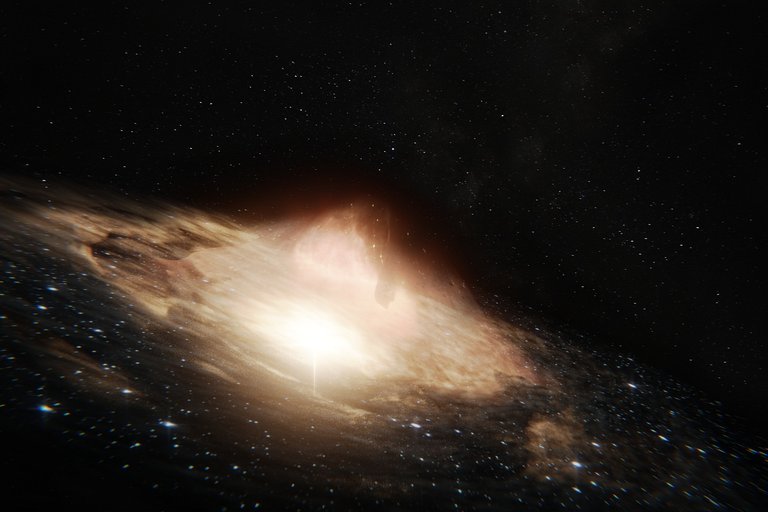Surviving A Quasar
The galaxy CQ4479 that is roughly 5.25 billion light-years away from us exists a cold quasar. Yet, it seems that the galaxy has some cosmic gas remaining and is still birthing stars.

Image by Alex Myers from Pixabay
- Be also sure to check out my other posts and follow me @kralizec and subscribe to my Youtube channel at Kralizec Gaming Youtube Channel
When a supermassive black hole goes wild in the center of a galaxy it starts eating up the surrounding matter it becomes a quasar. And according to all current theories, this is the end to the creation of new stars in the galaxy. It seemed to be the price galaxies had to pay for the spectacularly attractive quasars. At least astronomers thought saw.
Now it seems that this is not necessarily true. Kevin Cooke from the University of Kansas, Lawrence, and his coworkers discovered a galaxy called CQ4479 that survived a quasar and still births stars. In a single Earthly year stars with a mass of roughly 100 Suns are born. The key role towards this discovery was played by the flying Stratospheric Observatory for Infrared Astronomy (SOFIA).
As Allison Kirkpatrick says, the galaxy CQ4479 is evidence that activation of the galactic core does not necessarily stop the creation of new stars in the particular galaxy. This directly contradicts current theories about the creation and evolution of galaxies. The problem lies in the fact that an active quasar radiates a lot of energy and ejects a lot of matter. This causes surrounding cosmic gas to warm up and be blown away. And stars can only be born from cold cosmic gas.
The galaxy CQ4479 is roughly 5.25 billion light-years away from us. Scientists found out that it has a special type of quasar in it a so-called cold quasar. This is a quasar that still eats up matter and radiates yet hasn’t destroyed all the material from which new stars can be born. That’s the reason why CQ4479 still lives and births new stars.
The flying telescope SOFIA doesn’t even really observe the shine of newly born stars. Really it observes the infra-red radiation coming from cosmic gas that was warm up by processes of the creation of new stars. The researchers used a camera called HAWC+ onboard SOFIA that allowed them to see the creation of new stars in the past 100 million years.
As Cooke says, the time when CQ4479 will have both an active quasar and an active process of new stars being birthed will not last forever. Thus, the telescope SOFIA allowed us to a rare time when both these galactic events – an active quasar and the birthing of stars – overlapping. It is the earliest phase of the “death” of a galaxy that will one day lose the ability to create new stars.
Sources:
- If you like the content I’m producing about science maybe you will like the content I produce about gaming as well! Be sure to check out my other posts!
Your post has been curated by us! Received 20.00% upvote from @opb. Do consider delegate to us to help support our project.
Do join our discord channel to give us feedback, https://discord.gg/bwb2ENt
* This bot is upvoting based on the criteria : 1. Not plagiarised, 2. Persistent previous quality posts, 3. Active engagement with other usersDo upvote this commment if you 💚 our service :)